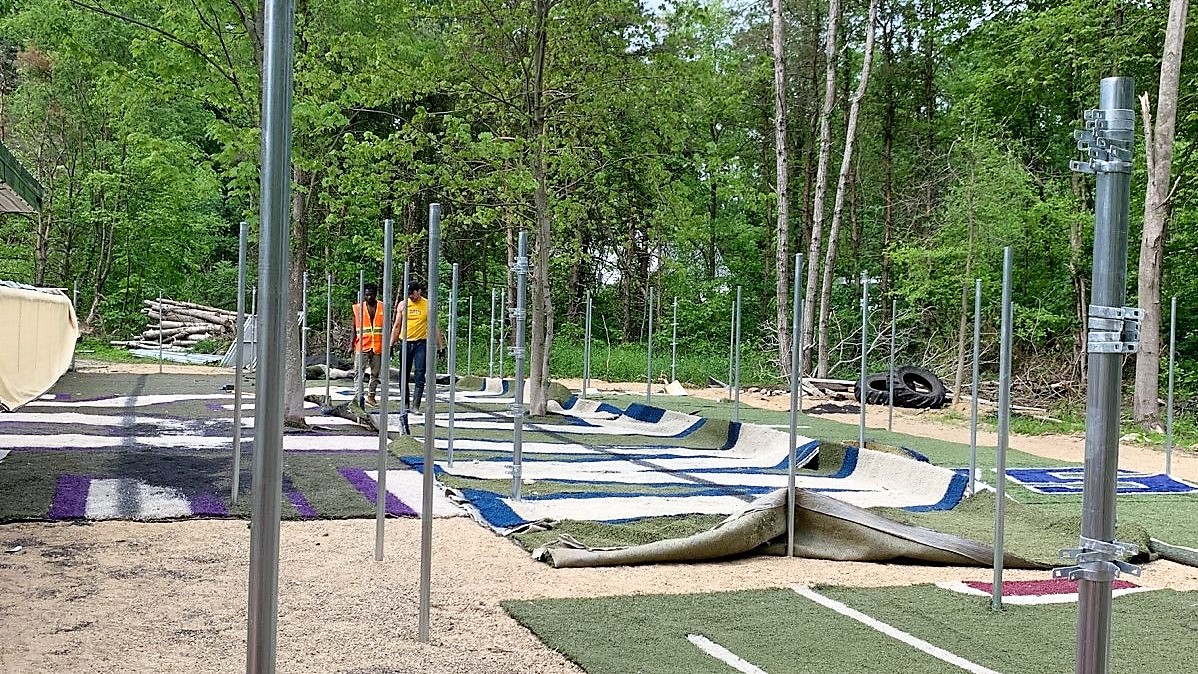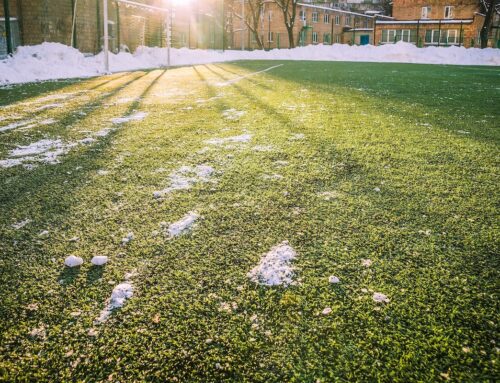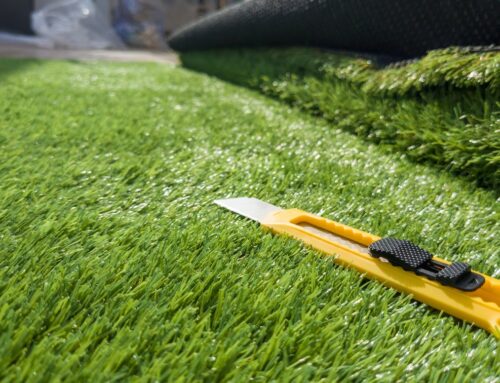Last Updated on February 17, 2022 by ReTurf
We all want our fields to be as safe as possible.
What makes a field unsafe?
No matter what type of field it is (natural or artificial turf), in most cases, it turns out to be poor upkeep.
Some of the most common safety problems that can affect sports fields include:
- Improper drainage can hold water in puddles or create holes and ditches.
- Overuse without aeration can cause grass fields to become too hard.
- Excessive amounts of weeds, overgrowth, or other grass types mixed into a field can create an irregular, trip-prone surface.
Those who study sports injuries that occur on regular and artificial turf have broken down the main variables of sports fields that mark them as safe or dangerous.
These two variables are the coefficient of friction and the coefficient of restitution.
These are mathematical terms that essentially represent how “sticky” or “slippery” a sports field is (friction), as well as how “hard” or “soft” it is (restitution).
Slippery vs. Sticky Fields
As you’d expect, they’ve found that fields with low friction tend to cause players to slip during play. So you might think a field with much higher friction is better. In actuality, researchers have found that fields with “too high” friction can put a lot more stress on players’ knees and other joints.
Hard vs. Soft Fields
When players play on a field with a higher coefficient of restitution (that is, “harder” fields), they are far more likely to end up with contact injuries—whether it’s regular grass or artificial turf.
Essentially, a slippery, sticky, and/or hard field is a dangerous field, and that field could be either regular grass or artificial turf. (Again, those who choose artificial fields don’t have to worry about the weed, overgrowth, or aeration problems that affect normal grass.)
Used Artificial Turf

ReTURF products aren’t merely artificial turf that is reused—it actually has different characteristics from new turf, which make it preferable for certain applications.
Besides the obvious cost savings and more natural look compared to new sports turf, used artificial turf from us brings an additional benefit: ReTURF removes the infill and inspects the turf meticulously to patch and repair any holes, as well as fixing any other damage that may exist.
So used artificial turf is just as safe as new artificial turf, with an added benefit of going through a thorough inspection and rehabilitation process before it makes its way to you.
Choosing ReTURF used artificial turf is a bit like choosing a certified pre-owned vehicle that has gone through an extensive multi-point inspection to make sure it has no issues.
Remember that by choosing used artificial turf, you’re helping to keep tons and tons of artificial turf out of our nation’s overflowing landfills. At the same time, you’re helping to remove the need for tons of water and fertilizer used to maintain large fields—let alone all the lawn equipment and fuel that would otherwise be required to maintain the fields.
All this, in addition to the cost savings, more natural appearance, and other benefits that choosing used artificial turf brings.
Compare our Basic and Premium artificial turf products here, or contact us now for a free quote.



